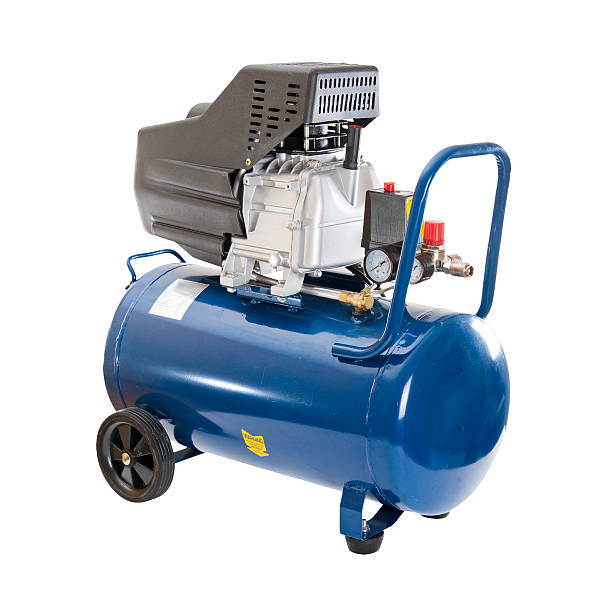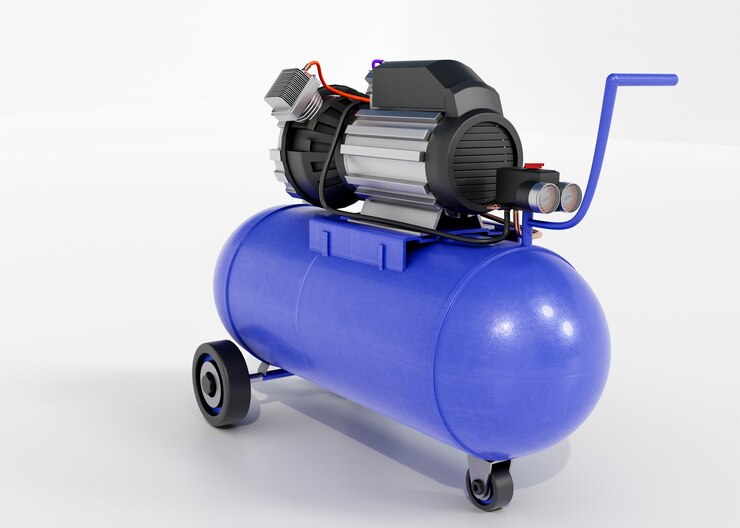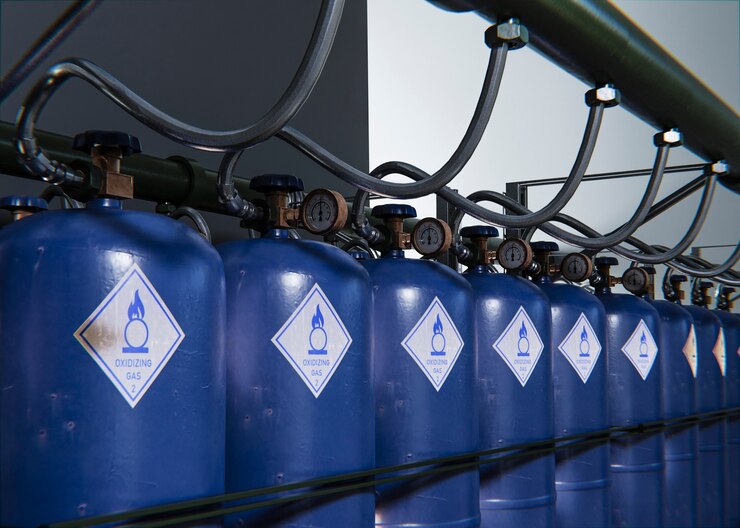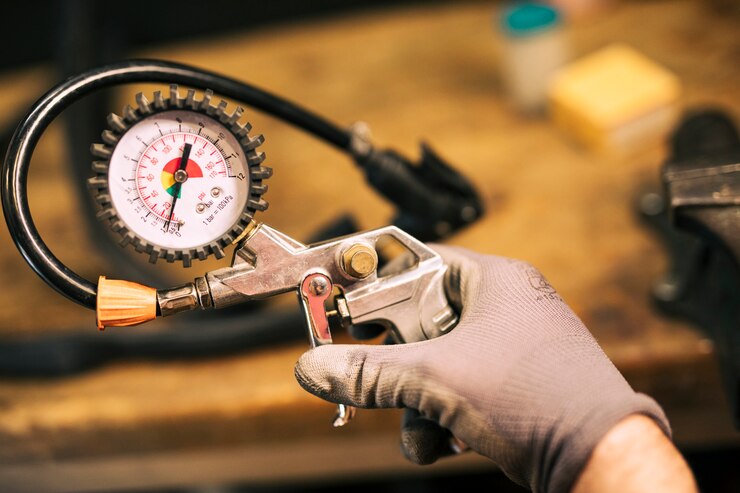Natural Gas Screw Compressor: Powering Efficiency & Reliability
The Powerhouse of Gas Operations: A Comprehensive Guide to Natural Gas Screw Compressor
The fossil fuel that burns cleanly, and natural gas are essential for powering our buildings, businesses, and vehicles. However, increasing pressure is frequently necessary to transfer this vital resource from the wellhead to the end consumer. Here comes the workhorse of the natural gas business, the natural gas screw compressor, which effectively increases pressure for a range of uses.
This in-depth manual delves deeply into the realm of compressors, examining their many advantages, uses, main parts, and operating principles. This article will provide you with the information you need, regardless of whether you’re a practising engineer, a business owner thinking about natural gas solutions, or you’re just interested in learning more about this important technology.
The Power of Positive Displacement: The Engine Behind Natural Gas Screw Compressors
Envision a device that can accurately regulate a gas’s flow by compressing it rather than increasing its velocity. Positive displacement compressors are the workhorses that drive natural gas operations, and their fundamental idea is this.
- These compressors work similarly to a syringe, in contrast to centrifugal compressors, which depend on centrifugal force. A device within a sealed chamber gradually lowers the amount of trapped gas. Regardless of outside influences, this decrease in volume results in a steady rise in pressure.
- These compressors are perfect for a range of applications in the natural gas sector because of their positive displacement design. They are excellent in increasing pressure at wellheads, preserving pressure for pipeline transmission, and even enabling gas storage.
The Heart of the Machine: The Screw Rotors
The screw rotors of a natural gas screw compressor are its central component. There are many other designs of these intermeshing helical rotors, but the two- and three-lobe versions are the most often used. Compressed natural gas is produced as a result of the rotors’ constant trapping of gas pockets and pushing of those pockets toward the discharge end inside the enclosed chamber.
Oil-Injected vs. Oil-Free: Choosing the Right Screw Compressor
There are two main types of natural gas screw compressors: oil-injected and oil-free.
- Oil is used in oil-injected screw compressors to cool, lubricate, and seal the rotors. There are benefits to this design, such as easier construction and less startup costs. To guarantee the purity of the compressed gas, further filtering systems are necessary due to the oil presence.
- Oil-free screw compressors use cutting-edge methods such as dry bearings and coatings to do away with the requirement for oil lubrication. Applications needing contaminant-free gas, such as food and beverage processing or delicate instrument air systems, are best suited for this method. Cleaner gas production is one advantage of oil-free compressors, despite their usually higher initial cost.
Beyond the Rotors: The Supporting Cast in a Screw Compressor System
In a natural gas screw compressor, the intermeshing screw rotors are the main attraction, but they depend on a supporting cast of essential parts to function at their best. Let’s examine these important figures:
- Air Intake Filter:
Carefully filtering out dust, debris, and other impurities from the entering air stream, this watchful sentinel watches over the system’s entrance. The sensitive interior components of the compressor are shielded from wear and tear by a clean air supply.
- Oil Cooler:
Heat is a normal consequence of compression in oil-injected screw compressors. To maintain the ideal oil temperature, the oil cooler functions similarly to a radiator by continuously circulating cold fluid. This controlled temperature keeps the rotors properly lubricated, sealed, and cooled, avoiding overheating and possible damage.
- Separator (only for oil-injected models):
Oil-injected systems need to separate the oil from the compressed gas stream following the compression step. The technical marvel that is the separator uses a variety of methods, such as filtration or centrifugal force, to accomplish this vital work. The compressed gas’s purity is guaranteed by a clean separation, which satisfies the demands of the downstream application.
- Aftercooler:
Hot gas coming out of the rotors is a difficulty as well as an opportunity. The potential is in the capacity to squeeze out more efficiency benefits. The compressed gas is cooled by the aftercooler, which functions as a heat exchanger by using water or air. The gas volume is further decreased throughout this cooling phase, increasing the system’s total efficiency.
- Discharge Valve:
The discharge valve is the last character in the compression drama. By controlling the flow of compressed gas out of the system and making sure it reaches the correct location at the desired pressure, this valve serves as a controlled gatekeeper.

A Spectrum of Applications: Where Screw Compressors Shine?
The adaptable workhorse of the natural gas industry, the natural gas screw compressor is used in many different industries. They are an invaluable tool in many processes because of their capacity to consistently and effectively increase pressure. Let’s examine some important domains in which screw compressors excel:
- Natural Gas Compression:
The wellhead, where extracted gas frequently requires a pressure increase before starting its trip through pipelines, is the center of natural gas production. In this first phase, screw compressors are essential because they increase pressure, which guarantees effective long-distance transmission.
- Pipeline Transportation:
To prevent frictional losses during the passage of gas, pipelines must be kept at a high enough pressure. Throughout the pipeline system, well-positioned screw compressor stations serve as pressure boosters, guaranteeing that the gas travels to its destination with the required force.
- Gas Storage:
Effective injection into subterranean storage facilities is necessary for the storage of natural gas for periodic peaks or strategic objectives. The force required to overcome the pressure differential and pump gas into storage caverns for later extraction is supplied by screw compressors.
- Gas Processing:
Not all natural gas is delivered in an operational form. Precise pressure control is frequently needed for different processing processes, such as separating valuable components or eliminating contaminants. For gas processing facilities, screw compressors provide a dependable and effective solution for these pressure manipulation requirements.
- Industrial Applications:
These screw compressors are not limited to the primary natural gas sector. Compressed natural gas is used in many industrial activities, including the manufacture of chemicals and food and beverage products. For these many industrial uses, screw compressors offer a stable source of compressed gas.
Unveiling the Benefits: Why Choose a Natural Gas Screw Compressor
Compared to alternative compressor technologies, natural gas screw compressor has the following strong advantages:
The positive displacement architecture of screw compressors allows for exceptional efficiency. For enterprises, this means fewer running expenses.
- Reliable Operation:
Screw compressors have a strong construction and few moving parts, which reduces maintenance requirements and downtime.
- Low Maintenance:
Screw compressors require less regular maintenance than other compressor models, which lowers lifetime expenses.
- Long Service Life:
These screw compressors may have a long service life and a consistent return on investment provided they receive the right care and maintenance.
- Scalability:
Screw compressors may be customized to match the unique requirements of a range of applications since they are available in several sizes and configurations.
Selecting the Right Natural Gas Screw Compressor:
When choosing the best natural gas screw compressor for your particular application, there are several important considerations to take into account. Here are some crucial components to assess:
- Flow rate:
This quantity, expressed in CFM, indicates how much gas you must compress in a certain amount of time. Knowing the flow rate you need makes sure the compressor you’ve selected can handle your operating requirements.
- Discharge Pressure:
Another important consideration is the intended pressure of the compressed gas at the output. It is possible to choose a compressor with the necessary muscle to reach the desired pressure level by specifying the required discharge pressure.
- Duty Cycle:
This is the ratio of the amount of time the compressor will run to its overall running time. To be sure your compressor can manage your workload without strain, choose one with a duty cycle higher than what you anticipate using it for.
- Efficiency:
Although natural gas screw compressors are known for their efficiency, you may find the optimal balance between performance and energy consumption by comparing models within the size and pressure range that you have chosen.
Maintenance Requirements:
Although screw compressors are typically low maintenance, some require more regular servicing than others. When choosing, take into account your maintenance resources and budget.
You may make an informed choice and choose a natural gas screw compressor that precisely suits your requirements by carefully weighing these elements. Recall that speaking with a knowledgeable compressor specialist may offer insightful advice and guarantee that you select the best solution for your needs.
Conclusion:
As the natural gas sector develops further, technological developments in natural gas screw compressor will be essential to maintaining profitable and sustainable operations. Discover the newest developments and how dependable screw compressor solutions may help your company grow. To discover more about the top screw compressor technology in the market, visit our website LEIYAO Compressor.



